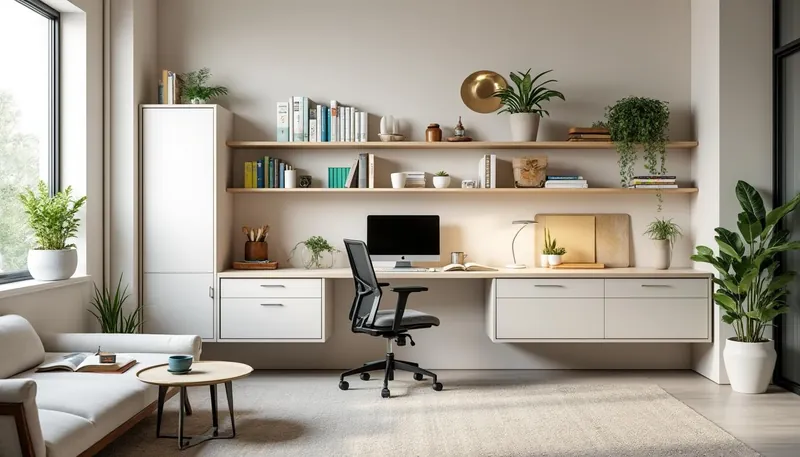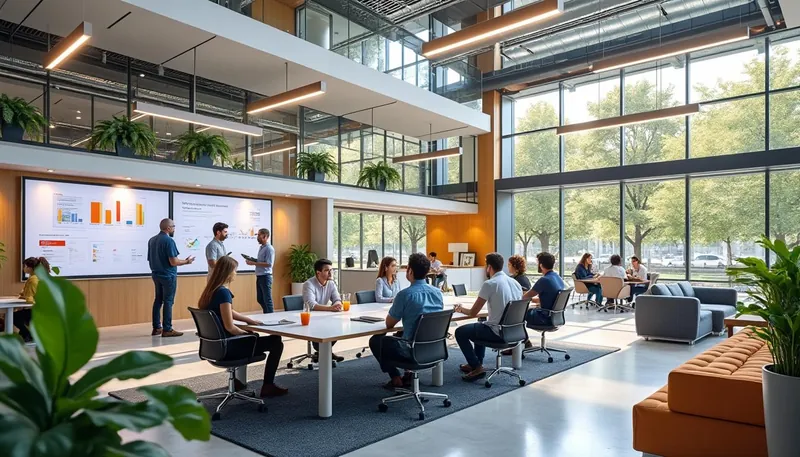In our fast-paced urban environment, the need for a connection with nature has never been more urgent. Biophilic design, which incorporates natural elements into our built environments, goes beyond aesthetics; it fosters wellbeing and enhances productivity in profound ways. As we adapt to the realities of 2025, rethinking our spaces with nature in mind could hold the key to improving both physical and mental health. Imagine living or working in a setting where sunlight floods in, greenery envelops you, and natural materials surround you. This integration of nature is not just a luxury; it is a necessity for creating landscapes that nurture the mind, body, and spirit. The challenge lies in understanding how to effectively embrace biophilic principles and incorporate them into our homes, workplaces, and public spaces.
As we explore biophilic design further, let’s uncover the various dimensions of how these principles can transform our environments. By merging architecture with the beauty of nature, we can experience the benefits of reduced stress, enhanced creativity, and improved overall happiness. Through various trends and projects, we can see how the biophilic design is shaping our surroundings. From urban jungles in cities to serene retreats in nature, biophilic design is redefining our understanding of home and workspace.
Key Points:
- Biophilic design promotes wellbeing by reducing stress and enhancing mood 🌼
- Incorporating natural elements can boost cognitive performance and creativity 💡
- Six core principles guide the effective implementation of biophilic design 🌳
- More than aesthetics, this design fosters deeper connections with nature 💖
- Examples include green roofs, natural lighting, and water features 💧
The Benefits of Biophilic Design in Enhancing Wellbeing
Biophilic design is not just about making spaces look beautiful; it significantly contributes to enhancing physical and mental wellbeing. When natural elements are incorporated into our environments, they provide a range of benefits that address various aspects of our lives. Research shows that interactions with nature can lead to improved mood, reduced anxiety, and overall happiness.
Among the standout benefits of biophilic design are:
- Stress Reduction: Exposure to natural elements can significantly lower cortisol levels, the hormone associated with stress. 🌿
- Enhanced Creativity: Natural environments promote divergent thinking and creativity, allowing ideas to flow more freely. 🎨
- Improved Cognitive Function: Natural light, for instance, boosts alertness and memory retention. 📚
- Emotional Stability: Areas designed with biophilic principles can cultivate feelings of safety and wellbeing, leading to decreased anxiety levels. 😊
Interesting studies reflect these benefits. For example, research from 2025 indicates that individuals in biophilically designed spaces report 30% less stress and higher satisfaction levels. These findings highlight the fundamental importance of integrating nature within our everyday spaces, from offices to homes.
| Benefit | Description |
|---|---|
| Stress Reduction | Lower cortisol levels due to exposure to natural elements 🌱 |
| Enhanced Creativity | Increased divergent thinking through nature interactions 🎉 |
| Improved Cognitive Function | Better alertness and memory from natures’ nourishing qualities 🧠 |
| Emotional Stability | Fostering a sense of safety and wellbeing in environments ❤️ |
Understanding the Six Core Principles of Biophilic Design
To effectively implement biophilic design, it is vital to grasp its six core principles. Each one plays a role in fostering deeper connections with nature, promoting a healthy environment that reflects our natural inclinations.
- Environmental Features: Integrating elements like wood, stone, and water, which create a sense of belonging. 🪨
- Natural Shapes and Forms: Utilizing shapes found in nature, such as organic curves and circular forms, to promote comfort. 🌀
- Natural Patterns and Processes: Mimicking natural patterns, such as fractals, to engage the senses and support emotional well-being. 🔄
- Light and Space: Prioritizing abundant natural light and spacious designs for enhanced mood and mental clarity. ☀️
- Place-Based Relationships: Designing spaces that reflect local ecology, enhancing cultural connections and identity. 🏞️
- Evolved Human-Nature Relationships: Acknowledging our inherent connection with nature, promoting a sense of peace and belonging. 🌍
For example, an office that incorporates elements of Pure Habitat might feature large windows to maximize natural light, plants and greenery that purify the air, and organic shapes in furniture design to create a calming atmosphere. By understanding these principles, designers can cultivate spaces that are not only functional but also enriching.
| Principle | Description |
|---|---|
| Environmental Features | Elements like water, light, and specific materials for connection. 💧 |
| Natural Shapes and Forms | Curves and organic shapes creating comfort and relaxation. 🍃 |
| Natural Patterns and Processes | Mimicking nature’s flow and rhythm for emotional well-being. 🌊 |
| Light and Space | Harnessing daylight to improve mood and cognitive function. 🌞 |
| Place-Based Relationships | Connecting design with local landscapes and culture. 🏡 |
| Evolved Human-Nature Relationships | Reinforcing our intrinsic desire to connect with nature. 🌳 |
Incorporating Natural Elements into Everyday Spaces
Practically implementing biophilic design into our daily lives can be done in diverse ways. From significant architectural projects to small-scale residential renovations, every effort counts to create environments that promote wellness. The goal remains consistent: reconnecting individuals with nature, even if the scale may vary.
Here are some effective strategies to integrate biophilic elements:
- Use of Plants: Introduce indoor gardens or potted plants to enhance air quality and aesthetics. 🌸
- Natural Light: Maximize window space or skylights to ensure spaces are well-lit by sunlight. 🌞
- Water Features: Incorporating fountains or small water bodies can create a soothing ambiance. 🌊
- Natural Materials: Utilize materials such as bamboo, stone, or reclaimed wood to connect with nature. 🪵
- Outdoor Spaces: Design patios, balconies, or terraces that encourage outdoor interaction. 🌳
The trend of creating a Green Haven within urban settings is increasingly gaining momentum. By adapting existing structures and spaces, we can promote a healthier lifestyle that advocates the importance of nature in our productivity and wellness.
Addressing Challenges in Implementing Biophilic Design
Despite the numerous benefits, there are challenges in applying biophilic design principles. Often, stakeholders face resistance to the concept of trying something new and innovative in established structures. Budget constraints, maintenance concerns, and the practicalities of integrating biophilic elements into existing designs pose hurdles. Additionally, understanding local climate conditions is paramount for successful implementation.
Common challenges include:
- Cost: Initial installation costs for biophilic design features may deter investor interest. 💸
- Maintenance: Features like green walls or water bodies require ongoing upkeep that can be overwhelming. 🧹
- Sustainability: Sourcing ethical, sustainable materials may not always be feasible. 📉
- Equitable Access: Ensure that the benefits of biophilic design are accessible to diverse communities. 🌎
By addressing these issues head-on and fostering collaboration between designers, architects, and community stakeholders, we can mitigate these concerns. Continuous education about the long-term benefits and wellbeing impacts of biophilic design can encourage investment in greener, more connected spaces.
| Challenge | Impact |
|---|---|
| Cost | Initial expenses deter implementation and investment. 💲 |
| Maintenance | Ongoing upkeep can be burdensome for property managers. 🏗️ |
| Sustainability | Sourcing ethical materials may be difficult and costly. ✅ |
| Equitable Access | Ensuring all communities can benefit is critical. 💖 |
What is biophilic design?
An architectural approach that integrates natural elements into built environments, enhancing the connection between inhabitants and nature for improved wellbeing.
How does biophilic design affect emotional health?
Biophilic design lowers stress and promotes feelings of calm and safety, leading to improved emotional health and stability.
What are the core principles of biophilic design?
The six core principles include Environmental Features, Natural Shapes and Forms, Natural Patterns and Processes, Light and Space, Place-Based Relationships, and Evolved Human-Nature Relationships.
Can biophilic design help in workplace settings?
Yes! Biophilic design increases productivity, enhances creativity, and reduces stress in workplace environments.
How can I implement biophilic design at home?
Introduce plants, maximize natural light, use water features, and incorporate natural materials to foster a nature-filled environment.

